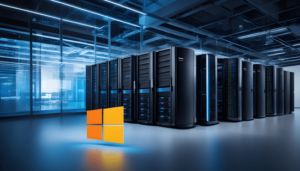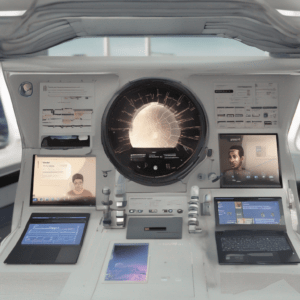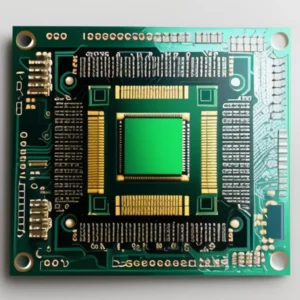Networking Quiz – Overview
Whether you’re a experienced IT professional or someone just starting to explore the intricacies of networking, a quiz can be an engaging and informative way to test and expand your knowledge. This article delves into the world of networking quizzes, exploring their significance, key topics, and the benefits of putting your networking skills to the test.
Table of Contents
Why Networking Quizzes Matter
Networking quizzes serve multiple purposes, catering to individuals at various stages of their learning journey. Here are some reasons why networking quizzes matter:
Knowledge Assessment:
Quizzes help assess your understanding of fundamental networking concepts, protocols, and technologies. They provide a snapshot of your current knowledge level, helping you identify areas that may need further exploration.
Skill Enhancement:
By actively participating in quizzes, you reinforce your understanding of networking principles and gain practical insights into troubleshooting and problem-solving.
Networking quizzes often simulate real-world scenarios, allowing you to apply theoretical knowledge to practical situations.
Stay Updated:
The field of networking is ever-evolving, with new technologies and standards emerging regularly. Quizzes keep you on your toes, encouraging continuous learning and adaptation to industry changes.
Key Topics in Networking Quizzes
A comprehensive networking quiz covers a range of topics, ensuring a well-rounded assessment of your networking acumen. Some key areas include:
Networking Fundamentals:
Basics of networking, OSI model, TCP/IP stack, and understanding of protocols.
Routing and switching:
Routing protocols, subnetting, VLANs, and switch configuration.
Security:
Firewall concepts, VPNs, encryption, and network security best practices.
Wireless Networking:
Wi-Fi standards, security in wireless networks, and troubleshooting wireless issues.
Network Services:
DNS, DHCP, NAT, and other essential network services.
Benefits of Taking Networking Quizzes
Self-Assessment:
- Identify strengths and weaknesses in your networking knowledge, enabling targeted learning.
Skill Validation: - Quizzes provide a tangible way to validate and showcase your networking skills to potential employers.
Continuous Improvement: - Regular participation in quizzes fosters a habit of continuous learning, keeping you abreast of industry advancements.
Community Engagement:
🧠 Test your knowledge with this quiz! 📝
1) The maximum number of nodes per segment depends on the………_.?
a) Bandwidth
b) Desired throughput
c) Regeneration ability
d) Attenuation
2) Information can be transmitted via one of_______siganlling method(s).
a) One
b) Two
c) Four
d) Five
3) IEEE designates Thicknet as_______Ethernet.
a) 10Base5
b) 10BaseT
c) 10Base10
d) 10Base2
4) Vertical connectors between floors are known as_______.
a) Spans
b) Riser
c) Lift
5) ________ensure(s) that data are transferred whole, in sequence, and without error from one node on the network to another.
a) Data Packets
b) Addressing
c) Protocol
d) File services
6) The maximum segment lenght on a 10BaseT network is_______meters.
a) 10
b) 50
c) 100
d) 1000
7) The first networks transmitted data over thick, heavy coaxial cables.
a) True
b) False
8) Which cannot support full-duplexing?
a) 100BaseT4
b) 10BaseT
c) 100BaseTX
9) Which is not an exmple of transmission media?
a) Wire
b) Coaxial cable
c) Radio waves
d) Fiber Optic
e) None of the above
10) Mail services requires a significant commitment of technical support and administration and resources due to their_______.
a) Instability
b) Access ability
c) Routing capability
d) Heavy use
11) WAN requires the same technology as LAN.
a) True
b) False
12) Mail services can only run one kind of system.
a) True
b) False
13) On modern networks, the transceiver are separate from the NICs.
a) True
b) False
14) You can mix 100BaseTX and 1000BaseT4 on a single network segment.
a) True
b) False
15) How many layers in the OSI model?
a) 5
b) 7
c) 6
d) 8
e) 4
16) Which device act as a traffic cop?
a) Router
b) Hub
c) Switch
d) Modem
17) Collision occurs when two devices on the same network segment attempt to simultaneously transmit.
a) True
b) False
18) Fiber Optic cable conducts electricity.
a) True
b) False
19) What is SMTP?
a) Simple Mailer transport protocol
b) Simple mail transport protocol
c) Single Mail transport protocol
20) An organization that share devices, saves______.
a) Money
b) Time
c) Space
d) All of the above
21) Peer-to-Peer network are not flexible.
a) True
b) False
22) Windows 98 does not qualify as a netowrk-operating system.
a) True
b) False
23) The computer you are controlling or working via a network.
a) remote computer
b) local computer
c) standalone computer
d) host computer
24) You should always try to pull all networks services on a single server.
a) True
b) False
25) HTTP is the protocol use to view web pages.
a) True
b) False
26) A network of computers and other devices that is confined to a relatively small space.
a) Global network
b) Local area network
c) Peer-to-Peer network
d) Metropolitan network
27) What layer of OSI does the encryption/decryption?
a) Network layer
b) Presentaion layer
c) Application layer
d) Data Link layer
28) E-mail use communication protocol.
a) SMTP
b) HTTP
c) ICMP
d) TCP/IP
29) What is the default port number for SMTP?
a) 21
b) 22
c) 28
d) 25
30) What is the default port number for FTP?
a) 21
b) 25
c) 18
d) 20
31) What is the default port number for Web server such as IIS and Apache?
a) 60
b) 55
c) 80
d) 70
e) 26
FAQ- Some basic networking question with answer
| Question | Answer |
|---|---|
| What is a network? | A network is a collection of computers, servers, mainframes, network devices, and other devices connected to one another for sharing resources and information. |
| What is IP address? | An IP (Internet Protocol) address is a numerical label assigned to each device participating in a computer network that uses the Internet Protocol for communication. |
| What is a router? | A router is a networking device that forwards data packets between computer networks. It is a key component in connecting multiple networks and directing traffic efficiently. |
| What is bandwidth? | Bandwidth is the maximum rate of data transfer across a network. It is often measured in bits per second (bps) and determines the speed and capacity of a network connection. |
| What is a firewall? | A firewall is a security device or software that monitors and controls incoming and outgoing network traffic based on predetermined security rules. |
| What is DNS? | DNS (Domain Name System) is a system that translates domain names into IP addresses, allowing users to access websites using human-readable names instead of numeric IP addresses. |
| How does a switch differ from a hub? | A switch operates at the data link layer and makes decisions based on MAC addresses, while a hub operates at the physical layer and simply broadcasts data to all connected devices. |
| What is the purpose of subnetting? | Subnetting is used to divide a larger network into smaller, more manageable sub-networks, improving performance, security, and overall efficiency of the network. |
| How does DHCP work? | DHCP (Dynamic Host Configuration Protocol) automatically assigns IP addresses and network configuration information to devices on a network, simplifying network management. |
| What is a VPN and why is it used? | A VPN (Virtual Private Network) creates a secure, encrypted connection over the Internet, allowing users to access a private network from a remote location, ensuring data privacy. |
Read More- Understanding VLAN 2024: Network Management & Security





